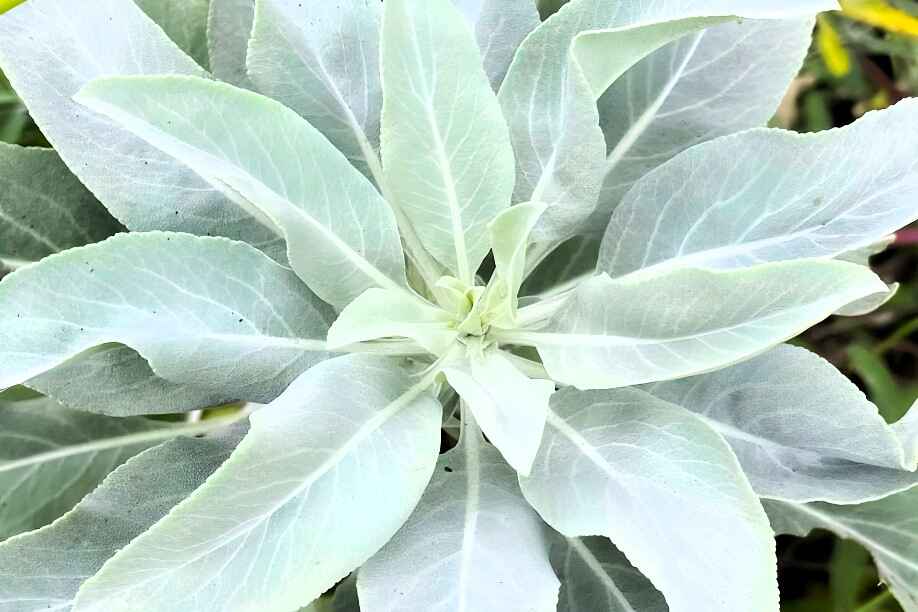White sage, Salvia apiana, has been used in traditional medicine and spiritual practices for centuries by Native American communities. Recently it’s become popular for its scent and as a symbol of wellness and cleansing. If you’re in Florida and wondering where to grow white sage you’re not alone. Florida’s climate and soil is both an opportunity and a challenge for this special plant. Let’s get into what you need to know to grow white sage in Florida.
Understanding White Sage’s Natural Habitat
Before you plant, you need to know where white sage grows naturally. Native to the southwestern United States, specifically California, white sage grows in arid, sunny areas with well draining soil. Its natural habitat is dry, rocky slopes and coastal sage scrublands where the plant is full sun and dry.
Florida’s climate, high humidity and frequent rain, is the opposite of what white sage likes. But with the right care and attention you can grow white sage in many parts of Florida.
Choosing the Right Location For Growing White Sage
North Florida:
North Florida has cooler winters and is more temperate than the rest of the state. The soil is sandy and well draining which is perfect for white sage. If you live here plant your white sage in a raised bed or container to improve drainage. Put the plant in a sunny spot that gets at least 6 hours of direct sun a day to mimic its natural habitat.
Central Florida:
Central Florida has a subtropical climate with hot humid summers and mild winters. The soil here can be sandy to loamy but often needs to be amended to drain better. Raised beds are recommended to prevent root rot especially during the wet season. Also consider placing your white sage in an area where it gets full sun in the morning and some shade in the afternoon to protect it from the intense midday sun.
South Florida:
South Florida’s tropical climate is the biggest challenge for white sage because of the high humidity and frequent rain. But it can be done. The key here is good drainage. Planting white sage in containers with good draining potting mix is often the way to go. Containers allow you to control the plant’s environment including moisture. Put the containers in a sunny spot and consider bringing them under cover during heavy rain.
Soil Requirements
White sage needs well draining soil to prevent root rot which is common in Florida’s humid climate. Sandy soils found in North and Central Florida are generally good but may need to be amended with gravel or coarse sand to drain better. In areas with clayey or loamy soil amending with organic matter like compost and sand will help create the porous environment white sage needs.
When planting in containers use a cactus or succulent potting mix which drains quickly. Adding a layer of gravel at the bottom of the container will help with drainage.
Watering Needs
One of the biggest mistakes when growing white sage in Florida is overwatering. White sage is drought tolerant and likes to dry out between watering’s. In Florida’s humid climate you need to let the soil dry out completely before watering again. During the wet season you may need to water less often or move container grown plants to a protected area.
In North and Central Florida watering every 2 weeks during dry spells is often enough. In South Florida where it’s more humid you need to monitor the soil moisture closely. Water only when the top inch of soil is dry to the touch.
Dealing with Humidity and Pests
Humidity is probably the biggest challenge when growing white sage in Florida. High humidity can cause fungal diseases, especially powdery mildew. Make sure good air circulation around your plants. Don’t overcrowd and prune back any nearby plants that might block air flow.
Aphids and spider mites can be a problem too, especially during warmer months. Check your plants regularly for pests and treat infestations asap with organic insecticidal soap or neem oil.
Fertilization
White sage is not a heavy feeder and does well in poor soil. Over fertilizing can cause too much leaf growth and make the plant more prone to pests and disease. If you do fertilize, a light application of a balanced slow release fertilizer in the spring is usually enough. Or you can use a diluted liquid fertilizer every 6 weeks during growing season.
When growing in containers, plants may need a bit more frequent feeding as nutrients can leach out of the potting mix with watering. But always err on the side of less rather than more with white sage.
See More: The Allure of Purple Flowers in Florida
Propagation
White sage can be propagated from seeds or cuttings, but cuttings are more successful, especially in Florida’s climate.
Propagation from Seeds:
Start seeds indoors in late winter or early spring. Use a well draining seed starting mix and place the seeds on the surface, press them lightly into the soil without covering them completely as they need light to germinate. Keep the soil lightly moist and around 70°F (21°C). Germination can take several weeks so be patient.
Once the seedlings are big enough to handle, transplant them into individual pots and harden them off before planting them in their final location.
Propagation from Cuttings:
To propagate white sage from cuttings, take a 4-6 inch (10-15 cm) cutting from a healthy plant in the spring or early summer. Remove the lower leaves, dip the cut end in rooting hormone and plant it in a well draining potting mix. Keep the cutting in a warm, bright location out of direct sunlight and water sparingly until roots develop. Once rooted, transplant the cutting into a larger pot or directly into your garden.
See More: Top 15 Purple-Flowered Vines to Enhance Your Garden Beauty
Seasonal Care and Maintenance
White sage is a perennial so it will live for several years with proper care. But even in Florida’s mild climate it has a seasonal growth cycle.
Spring:
In the spring white sage will start to grow new stems. This is the time to prune any dead or damaged stems and shape the plant as needed. If you’re in containers this is also a good time to repot into a larger pot if the plant has outgrown its pot. Fertilize if you want.
Summer:
In the hot summer months white sage will continue to grow. Keep an eye on soil moisture especially during heavy rain. Make sure the plant gets plenty of sun but be mindful of midday sun especially in Central and South Florida. Prune as needed to promote air circulation and prevent fungal issues.
Fall:
As the temperatures cool white sage will slow down. This is a good time to cut back on watering and let the plant start its dormant period. If you’re in North Florida consider giving some protection from frost but white sage can tolerate light frosts.
Winter:
In the winter white sage will go dormant. Water sparingly and don’t fertilize. In Central and South Florida where winters are milder the plant may still grow but still reduce watering to prevent root rot.
How to Harvest White Sage
White sage can be harvested once the plant is established usually after the first or second year of growth. Harvest with care so the plant stays healthy and continues to produce.
To harvest use sharp clean scissors or pruning shears and cut the stems just above a set of leaves. This will encourage the plant to bush out and produce more growth. Don’t harvest more than one-third of the plant at a time so it can recover.
Best time to harvest is in the morning after the dew has dried but before the heat of the day. Hang the harvested stems in a cool dry place with good air circulation to dry. Once dry the leaves can be stripped from the stems and stored in an airtight container for future use.
See More: Florida Villages Deep Purple Leaf Plants No Flowers Full Sun
Sustainable Practices and Ethical Considerations
Since white sage is in high demand, we need to grow and harvest it responsibly. Over harvesting in the wild has caused concerns about the sustainability of wild white sage in its natural habitats.
By growing your own white sage in Florida you are helping to preserve this plant. Make sure you’re using organic methods to minimize your impact on the environment and not using synthetic chemicals that can harm beneficial insects or the ecosystem.
White Sage in Florida Gardens
Growing white sage in your Florida garden has both beauty and practical uses. Its silvery green leaves and upright growth make it a great addition to herb gardens, xeriscapes and native plant gardens. Plus it can be used for smudging rituals, natural remedies and culinary uses.
But please note white sage is considered a sacred plant in Native American culture, especially among tribes in the southwestern US. When growing and using white sage please do so with respect and awareness of its cultural significance.
Conclusion
Growing white sage in Florida requires you to consider the plant’s natural habitat and needs. Florida’s climate can be challenging, especially humidity and soil drainage but white sage can thrive with the right care. Whether you are in North, Central or South Florida the key is to replicate the dry sunny conditions white sage loves.
By choosing the right location, soil and watering practices, and being mindful of humidity and pests you can enjoy this unique and culturally significant plant in your own garden. Whether you are growing white sage for its aroma, spiritual significance or just as a beautiful addition to your landscape Florida has plenty of opportunities to grow this amazing plant.

